- Home
- Ramachandra Guha
Patriots & Partisans Page 7
Patriots & Partisans Read online
Page 7
India has been called a ‘dynastic democracy’. Perhaps it would be more accurate to call it a darbari democracy. Especially when the Congress is in power, the atmosphere in New Delhi resembles nothing so much as a medieval court. Intrigue and gossip are rife. Those who seek public office nudge themselves ever closer to the inner circle of the King, the Queen, or the Prince-in-Waiting. Those who already hold public office have one eye on their job and another on what needs to be done, sycophantically, to retain it.
Twice a year, on the birth and death anniversaries of Rajiv Gandhi, the sycophantic culture of the Congress party is put on public display in the pages of our newspapers. Thus, judging by the television news on the night of the 20th of May 2010, it was a day like any other—marked by natural disaster (a cyclone predicted for Orissa), violent rebellion (the blowing up of railway tracks by Maoists in Bihar), political partisanship (the insistence by Mamata Banerjee that the Union railway minister would be from her party even if she soon moved back to Kolkata to become, as she hoped, the chief minister of West Bengal), and corruption in sport (fresh allegations of match-fixing, this time against Pakistani cricketers). The next morning, however, the newspapers had given top billing to a man who had not figured in the news the past twenty-four hours, or the past week, or even the past month. In fact, as page after page of that day’s newspaper indirectly and inadvertently reminded us, he had been dead a full nineteen years. The reason that he was yet commanding much space was that he was once India’s prime minister, and, more importantly, was the husband of the most powerful living Indian, the chairperson of the United Progressive Alliance (UPA).
On this day, the 21st of May 2010, several pages of the daily newspaper were given over to printing the photograph, and extolling the virtues, of Rajiv Gandhi. A half-page advertisement taken out by the ministry of petroleum and natural gas printed a large portrait with the line: ‘Remembering Rajiv Gandhi and following his path …’ The ministry of information and broadcasting went further—they paid for a full page, and in colour too. ‘Nation pays tribute to Rajiv Gandhi on his martyrdom day. Nation resolves to strengthen the spirit of unity’, ran (part of) the text. Other half-page or full-page advertisements were taken out by (among others) the ministry of housing, the ministry of power, and the department of information technology. These were slightly more ecumenical in their worship—while a portrait of Rajiv Gandhi and an excerpt from his words dominated, smaller pictures of the prime minister, Dr Manmohan Singh, and of Mrs Sonia Gandhi were also inserted, along with a picture of the minister in charge of the department.
These advertisements were paid for from the public purse, but without the consent or concurrence of the public. So far as I could tell, with only one exception, all the ministries that had taken out ads were headed by Congressmen (or Congresswomen). The exception was also very partial—it pertained to the department of information technology, whose ad was dominated by a large portrait of Rajiv Gandhi, but which also contained photos of the three ministers in this ministry. Two of these were Congressmen. The third, A. Raja, was not, but in view of the controversies he was then embroiled in, may not have been entirely averse to being associated with a commemorative venture designed, above all, to please the head of his alliance.
The best, and perhaps only, way to understand these advertisements is that they are statements of loyalty and devotion on the part of men, and women, who owed their jobs to the wife of the man they were seeking to honour. The size of the advertisement may be taken as proportionate to the minister’s insecurity—the larger the ad, the more he or she felt the need to signal his or her devotion to the First Family of Indian politics. As for those ministries which chose not to take out any ads on that day, it must be that their heads were completely secure in their jobs, or in their relationship with the Congress president. There is a third possibility—that they might simply have forgotten the significance, to their party, of 21st May.
The advertisements were carried in the several English-language newspapers I subscribe to. They were also printed in Indian-language periodicals across the country (I saw them, for example, in the Kannada newspapers, and in the Bangalore edition of a Hindi newspaper). What did this collective exercise in political sycophancy cost the nation? A major national newspaper I checked with said a full-page colour advertisement would cost Rs 1.38 crore. However, by law, or custom, ads put out by government departments enjoy a substantial discount. Still, the fact that so many ads were taken, and in so many editions of so many newspapers, must mean that the aggregate cost would have been very substantial indeed. A back-of-the-envelope calculation suggests that on the 21st of May 2010, perhaps sixty or seventy crore were spent by the taxpayer—without his or her consent—on praising Rajiv Gandhi. Since the practice has been in place since 2005, the aggregate expenditure to date on this account is probably in excess of Rs 300 crore.
I wonder if the ministers who sanctioned those ads thought of alternative, more constructive, and more enduring ways in which the money could have been spent. How many villages might the ministry of power have electrified had it chosen not to take out that full-page ad in colour? How many government schools could have been supplied computers by the department of information technology if the ministers concerned had been more secure of their position in party and government?
I cannot speak for Rajiv Gandhi, but as a student of Jawaharlal Nehru and his times, I can confidently state that Nehru would have been embarrassed by such flattery at the taxpayer’s expense. For, despite its handful of billionaires, India remains a poor country. Despite its healthy foreign exchange reserves, the Government of India operates at a large fiscal deficit (currently in excess of 10 per cent of GDP). It really cannot afford to throw crores and crores at assuaging the insecurities of individual ministers or indulging the vanity of a particular family.
III
The dynastic principle has damaged the workings of India’s preeminent political party, and beyond, the workings of Indian democracy itself. One manifestation as remarked above, is the filling of important positions on the basis of chamchagiri rather than competence. Another is that Mrs Indira Gandhi’s embrace of the dynastic principle for the Congress served as a ready model for other parties to emulate. With the exception of the cadre-based parties of left and right, the CPM and the BJP, all political parties in India have been converted into family firms. The DMK was once the proud party of Dravidian nationalism and social reform; it is now the private property of M. Karunanidhi and his children (with their children in the wings, awaiting their chance). Likewise, for all his professed commitment to Maharashtrian pride and Hindu nationalism, when picking the next Shiv Sena leader, Bal Thackeray could look no further than his son. The Samajwadi Party and Rashtriya Janata Dal claimed to stand for ‘social justice’, but the leadership of Mulayam’s party passed on to his son, and in Lalu’s party to his wife. The practice has been extended down the system, so that if a sitting MP dies, only his son or daughter can be nominated in his place.
The cult of the Nehru–Gandhis, dead and alive, is deeply inimical to the practice of democracy. It has led to the corruption and corrosion of India’s premier political party, whose own example in this regard has been eagerly followed by the regional formations. Travelling through Tamil Nadu some years ago, I was met at every turn by ever-larger cut-outs of the chief minister’s son and heir apparent—cut-outs of M.K. Stalin smiling, Stalin writing, Stalin speaking into a cell phone. The only other place where I have felt so stifled by a single face was in the Syria of Bashar Assad.
For his part Jawaharlal Nehru, following Gandhi, tried to base his policies on procedures and principles, rather than on the force of his personality. Within the Congress, within the Cabinet, within the Parliament, Nehru worked to further the democratic, cooperative, collaborative ideals of the Indian Constitution. The judiciary, the bureaucracy and the press were given autonomy; there was no attempt to force them to do the Leader’s bidding. In his long tenure as prime minister, Neh
ru did not impose chief ministers of his liking on Congress-ruled states; these were chosen by the local legislators alone. In all this, Nehru was working against the grain of history, against the deep-seated feudal and hierarchical tendencies in Indian society. Indeed, his own party, his bureaucracy, his press, would still tend to sometimes treat him as if he had the attributes of the divine.
Nehru might not have entirely succeeded in building a democratic, non-hierarchical culture in Indian politics. But it is notable that he tried. Which cannot, however, be said for his daughter Indira Gandhi or his grandsons Sanjay and Rajiv Gandhi. One cannot really say this about the current head of the Congress party, either. Thus, shortly after the United Progressive Alliance came to power in 2004, Sonia Gandhi’s birthday was celebrated at a well-attended function in New Delhi as ‘Tyag Divas’. Here, one speaker claimed that his leader embodied the virtues of the Buddha, Ashoka and Mahatma Gandhi. Were this an ordinary Congress chamcha one might perhaps have disregarded it, but the person making these outrageous comparisons was no less than the Union home minister, Shivraj Patil.
Loyalty to the Leader, in person, rather than to the policies of his or her government—such was the legacy of Mrs Indira Gandhi, to be furthered and distorted by her progeny, and by leaders of other parties too. What Indira Gandhi did at the Centre was exceeded in the provinces, where the likes of M.G. Ramachandran and N.T. Rama Rao created leadership cults that might have impressed Joseph Stalin himself. Their initiatives in this regard have been taken even further by Bal Thackeray and J. Jayalalithaa, who have used the bhakti of their followers in dangerously undemocratic ways. Those who disagree with them in public have every chance of being physically attacked, as has been the experience of journalists in Mumbai and lawyers in Tamil Nadu.
This essay is being written to deplore the dynasty’s role in the degradation of Indian democracy, but also to clear Jawaharlal Nehru of the false and motivated charge that he had anything to do with its creation. It was Indira Gandhi who founded the dynasty—she brought her sons into the Congress, and made it clear to all, within and outside the party, that she expected them to succeed her.
There is another, and perhaps more consequential reason, to separate Nehru from later generations of the Family. For him, politics was a matter of commitment and sacrifice, whereas for his descendants, politics has served as a comfortable safety net. The Indian National Congress was Nehru’s true and proper family. Neglectful of his wife, distant towards his daughter, it was the Congress that gave real meaning and purpose to Nehru’s life. For nearly fifty years it was his primary affiliation and allegiance. In the years before Independence, he worked ferociously hard in building the party’s profile in northern India. He also travelled extensively across Europe and Asia to take the message of Congress nationalism to the world. These activities were interrupted by periodic bouts of jail-going, which however afforded the opportunity of forging ever closer friendships with his fellow Congressmen and, it must be added, Congresswomen.
Nehru’s attachment to the Congress comes out most vividly in his writings. His Letters to Chief Ministers contains frequent references to freedom fighters who had recently died, commending their work and example to those who were alive and still sought to serve India. His most famous book, The Discovery of India, is dedicated to ‘my colleagues and co-prisoners in the Ahmadnagar Fort Camp’. These colleagues were, of course, all Congressmen, likewise jailed for their involvement in the Quit India movement. The preface builds on the dedication in these still moving words:
My eleven companions in Ahmadnagar Fort were an interesting cross-section of India and represented in their several ways not only politics but Indian scholarship, old and new, and various aspects of present-day India. Nearly all the principal living languages, as well as the classical languages which have powerfully influenced India in the past and present, were represented and the standard was often that of high scholarship. Among the classical languages were Sanskrit and Pali, Arabic and Persian; the modern languages were Hindi, Urdu, Bengali, Guj[a]rati, Marathi, Telugu, Sindhi and Oriya. I had all this wealth to draw upon and the only limitation was my own capacity to profit by it [emphasis mine].
Nehru was not prone to false modesty, so we may take that last caveat as being wholly sincere. At any event, one cannot imagine Indira, Rajiv or Sonia writing in this fashion. This is so for at least three reasons: they lacked the literary ability, they did not have the good fortune (or otherwise) to spend extended periods in prison, and they did not think that they had much to learn from other members of the Congress.
Jawaharlal Nehru could have been a successful lawyer, or an internationally renowned writer; he chose to fight for the freedom of his country instead. The cases of Sanjay, Rajiv and Rahul Gandhi are all too different. After having failed to distinguish themselves in other fields, they took their mother’s advice to enter the family business—where there was a place reserved for them at the very top.
IV
I would like to end this essay with a counterfactual question—what if Lal Bahadur Shastri had lived for another five years? If Shastri is at all remembered today, it is for his bold leadership during the war with Pakistan in 1965, when he opened a second front in the Punjab after the invaders threatened to overrun Kashmir. In fact, his contributions to the nation were more substantial. For instance, it was Shastri who laid the foundation of the Green Revolution. The first few Five Year Plans had neglected the agrarian sector, leading to a serious shortage of foodgrains. No sooner was he made prime minister than Shastri shifted his able colleague, C. Subramaniam, from the then prestigious steel ministry to the agriculture portfolio. With the prime minister’s backing, Subramaniam set about reorganizing the system of agricultural research, orienting it towards the selection and promotion of high-yielding varieties. These moves were consistent with the stirring slogan coined by the prime minister—‘Jai Jawan, Jai Kisan’. Meanwhile, Shastri had also initiated moves to free industrial enterprise from the shackles of state control.
In the first weeks of 1966 Shastri died of a heart attack in the city of Tashkent, which was then part of the Soviet Union. The Indian prime minister had gone there, at the invitation of the Soviets, to forge a peace treaty with Pakistan’s Ayub Khan. There has been some speculation about whether Shastri died of natural causes—speculation that continues because the Government of India has (typically) refused to release the official report on his death. But perhaps there was no hanky-panky—perhaps it was just that his traditional apparel did him in, with a dhoti and kurta inadequate protection against the harsh cold of an Uzbek winter.
Shastri was only sixty-three when he died. The question one must ask is not how he died, but what if he had lived another five or ten years? His conduct during the war with Pakistan had greatly elevated him in the minds (and hearts) of his countrymen. Had he lived, he would have assuredly led the Congress to victory in the fourth General Elections in 1967. With a solid majority behind him, he might have undertaken to find a final resolution to the Kashmir dispute. A further five years in power would also have allowed him, and his colleagues, to deepen their programmes of economic reform.
In the event, Shastri died in 1966, and Indira Gandhi became prime minister—not because she was the most able and experienced member of the Cabinet, but because the Congress bosses thought they could control her. By the end of the 1960s India was beginning to achieve self-sufficiency in food production. Naturally, the credit accrued to the incumbent prime minister, rather than to her dead predecessor. Meanwhile, she had also enjoyed a success that could be more directly attributed to her own initiative and drive—namely, the victory over Pakistan in the war of 1971.
But what if Lal Bahadur Shastri had lived? Then it would have been he, not Mrs Gandhi, who would have been praised for the benefits of the Green Revolution; he, not she, who would have been given credit for any battles won against Pakistan.
Had Shastri continued as prime minister until the end of the 1960s, or beyond, the e
conomic history of India might have turned out very differently. In the 1950s, under the direction of the state, India had nurtured a reasonably robust domestic industry. It was now time to allow for the freer play of market forces. In speeches made in 1965, Shastri clearly indicated that he would like to take the economy in that direction. Sadly, he died soon afterwards. Instead of trusting to the energy and enterprise of the private sector, his successor strengthened the control of the state over the economy. The consequences were the continuation of low rates of growth, a situation that began to change only after the reforms of 1991 and beyond.
Had fate given Lal Bahadur Shastri a longer innings as prime minister, then the Indian economy may now have been more robust and resilient. He was both a pragmatic reformer as well as a man of conscience. Had he freed the processes of production from state control, he would simultaneously have initiated welfare measures to ameliorate poverty. As a man of vision and integrity, he would also have sought to improve the performance of India’s public institutions.
Had Shastri lived, Indira Gandhi may or may not have migrated to London. But even had she stayed in India, it is highly unlikely that she would have become prime minister. And it is certain that her son would never have occupied or aspired to that office. Had Shastri been given another five years, there would have been no Nehru–Gandhi dynasty. Sanjay Gandhi and Rajiv Gandhi would almost certainly still be alive, and in private life. The former would be a (failed) entrepreneur, the latter a recently retired airline pilot with a passion for photography. Finally, had Shastri lived longer, Sonia Gandhi would still be a devoted and loving housewife, and Rahul Gandhi perhaps a middle-level manager in a private sector company.

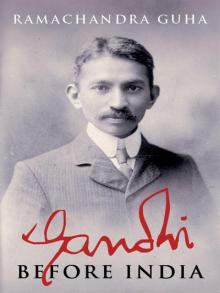 Gandhi Before India
Gandhi Before India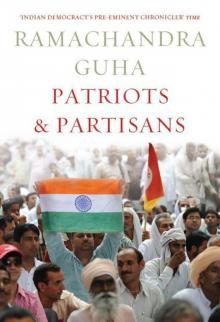 Patriots & Partisans
Patriots & Partisans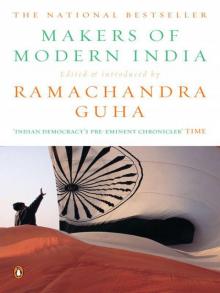 Makers of Modern India
Makers of Modern India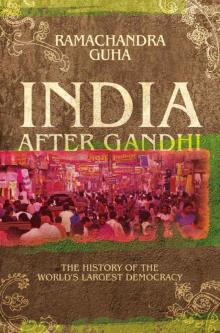 India After Gandhi: The History of the World's Largest Democracy
India After Gandhi: The History of the World's Largest Democracy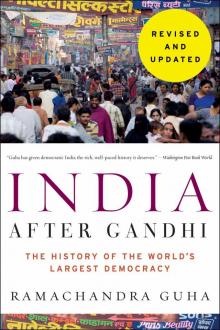 India After Gandhi Revised and Updated Edition
India After Gandhi Revised and Updated Edition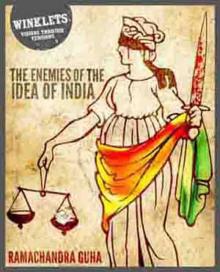 The Enemies of the Idea of India
The Enemies of the Idea of India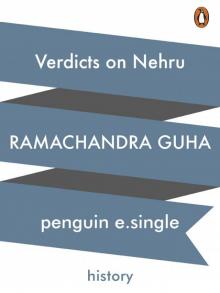 Verdicts on Nehru
Verdicts on Nehru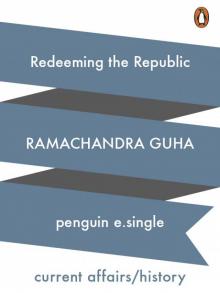 Redeeming the Republic
Redeeming the Republic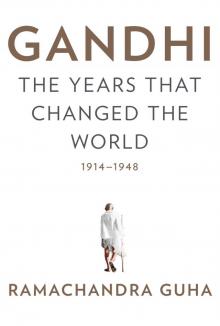 Gandhi
Gandhi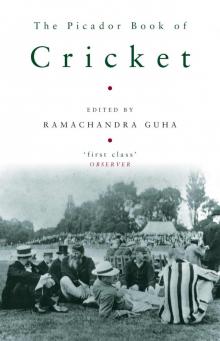 The Picador Book of Cricket
The Picador Book of Cricket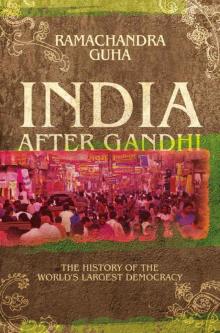 India After Gandhi
India After Gandhi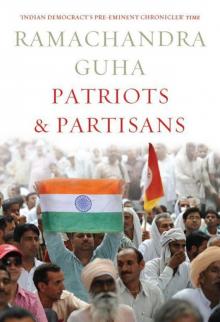 Patriots and Partisans: From Nehru to Hindutva and Beyond
Patriots and Partisans: From Nehru to Hindutva and Beyond